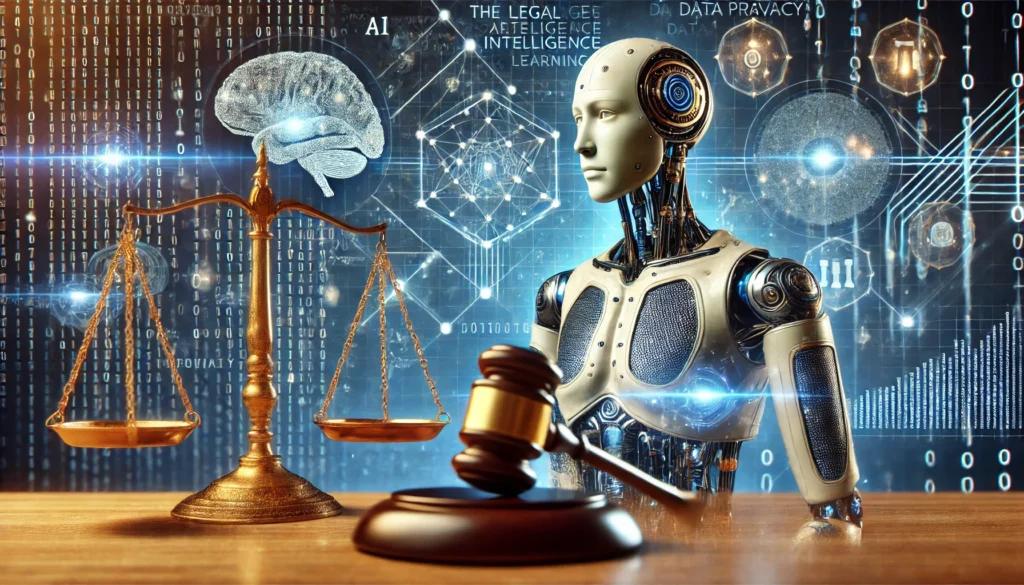Published on 03rd August 2025
Authored By: Sanskriti Upadhyay
Shambhunath Institute of Law, Prayagraj
Introduction
Facial Recognition Technology (FRT) has develop as one of the most controversial and rapidly expanding technologies in modern India. This biometric identification system, which creates digital maps of human faces through complicated algorithms, represents both a emerging technologies and a fundamental challenge to individual privacy rights. As India races toward digital transformation, the intersection between technological innovation and constitutional rights has created a complex legal landscape that demands careful examination.
The widespread deployment of facial recognition systems across various sectors in India has raised profound questions about the balance between security, convenience, and individual privacy. From airports and railway stations to educational institutions and public spaces, FRT systems are increasingly becoming part of everyday life. However, this proliferation occurs within a legal framework that is still evolving, creating uncertainty about the boundaries of acceptable use and the protection of citizen rights.
Understanding the legal and ethical implications of facial recognition technology requires examining multiple dimensions: the constitutional foundation of privacy rights in India, existing and emerging legal frameworks, practical applications across different sectors, and the ongoing challenges in creating effective regulation. This analysis becomes particularly crucial as India positions itself as a global technology leader while simultaneously grappling with questions of digital rights and governance.
Constitutional Foundation: The Right to Privacy in India
The legal discourse surrounding facial recognition technology in India must begin with the landmark Supreme Court judgment in Justice K.S. Puttaswamy (Retd.) v. Union of India (2017), which fundamentally transformed the landscape of privacy rights in the country. This nine-judge bench decision declared privacy as a fundamental right under Article 21 of the Indian Constitution, establishing it as an intrinsic part of the right to life and personal liberty.
The Puttaswamy judgment established a three-pronged test for any interference with the right to privacy. First, such interference must pass the test of legality, meaning it must have a legal basis in existing law. Second, it must serve a legitimate state interest, ensuring that the interference is not arbitrary but serves a recognized public purpose. Third, it must be proportionate, meaning the means employed must be reasonably connected to the objective sought to be achieved, and the interference must be the least restrictive among available alternatives.
This constitutional framework creates the foundation for evaluating facial recognition technology deployments. When government agencies or private entities implement FRT systems, they must demonstrate that such deployment meets all three criteria established by the Supreme Court. The technology must be legally authorized, serve legitimate purposes such as security or public safety, and employ methods that are proportionate to the objectives being pursued.
The constitutional recognition of privacy as a fundamental right also means that any violation of privacy through facial recognition technology can be challenged in courts as a violation of constitutional rights. This provides citizens with legal recourse when FRT systems are deployed without proper authorization, adequate safeguards, or proportionate measures. The constitutional framework thus serves as both a shield protecting individual rights and a sword that can be used to challenge inappropriate deployments of surveillance technology.
Current Legal Framework Governing Facial Recognition Technology
The Digital Personal Data Protection Act, 2023
The Digital Personal Data Protection Act (DPDP Act), enacted in 2023, represents India’s first comprehensive data protection legislation and significantly impacts the use of facial recognition technology. The Act establishes detailed rules for collecting, processing, and storing personal data, which includes biometric information such as facial recognition data.
The DPDP Act introduces the concept of “data fiduciaries” (entities that collect and process personal data) and “data principals” (individuals whose data is being processed). Under this framework, organizations deploying facial recognition technology must obtain explicit consent from individuals before collecting their biometric data, except in specific circumstances defined by law. This consent requirement represents a significant shift from previous practices where facial recognition systems were often deployed without explicit individual consent.
The Act also establishes strict requirements for data processing transparency. Organizations must provide clear and comprehensive notices to individuals before collecting personal data, including specific details about the data being processed, its purpose, and the entities involved. For facial recognition systems, this means clear disclosure about how facial data will be collected, processed, stored, and potentially shared with third parties.
The DPDP Act includes provisions for cross-border data transfers, data retention limitations, and individual rights including the right to access, correct, and erase personal data. These provisions directly impact facial recognition deployments, particularly systems that store data in cloud services or share information across jurisdictions.
The Aadhaar Act and Biometric Data Protection
The Aadhaar Act creates specific requirements for biometric information disclosure and usage, mandating authentication of the Unique Identification (UID) of individuals before using biometric data. Violations of the Act’s provisions can result in imprisonment of up to three years and financial penalties.
The Aadhaar framework provides important precedents for biometric data protection that influence facial recognition technology regulation. The Supreme Court’s decision in Aadhaar cases established that while biometric data collection can serve legitimate state interests, it must be subject to robust safeguards and cannot be used for purposes beyond those specifically authorized by law.
The intersection between Aadhaar and facial recognition technology creates complex legal questions. While Aadhaar primarily uses fingerprint and iris biometrics, the legal principles established for protecting these biometric identifiers extend to facial recognition data. Organizations seeking to link facial recognition systems with Aadhaar data must navigate additional layers of legal requirements and safeguards.
Information Technology Act and Rules
The Information Technology Act, 2000, and its subsequent amendments provide the broader legal framework for digital technologies in India. The Act includes provisions for data protection, cybersecurity, and digital governance that apply to facial recognition systems. The Information Technology (Reasonable Security Practices and Procedures and Sensitive Personal Data or Information) Rules, 2011, specifically address the collection and processing of sensitive personal data, which includes biometric information.
These rules require organizations to implement reasonable security practices for protecting sensitive personal data, obtain consent before collection, and ensure that data is used only for the purposes for which it was collected. Organizations must also implement appropriate technical and organizational measures to prevent unauthorized access, alteration, or disclosure of biometric data collected through facial recognition systems.
Regulatory Guidelines and Policy Framework NITI Aayog Guidelines and Recommendations
NITI Aayog guidelines advocate for a consent-based policy for using facial recognition technology, requiring explicit approval from individuals before collecting their biometric data. These guidelines represent the government’s current policy direction on FRT regulation and emphasize the importance of individual consent and transparency in deployment.
The NITI Aayog framework also emphasizes the need for sector-specific regulations that account for different use cases and risk levels. This approach recognizes that facial recognition technology deployed in high-security environments like airports may require different regulatory treatment than systems used in commercial establishments or educational institutions.
The regulatory framework incorporates principles of legality (adherence to existing laws), reasonability (proportionality to the objective), and proportionality (balancing security needs with individual rights). These principles provide guidance for organizations implementing facial recognition systems and for regulators evaluating their compliance.
Sectoral Regulations and Applications
Different sectors in India have developed varying approaches to facial recognition technology regulation. The aviation sector, for example, has implemented FRT systems at major airports with specific security justifications and regulatory oversight. Railway authorities have deployed facial recognition for security screening and passenger identification, operating under transportation security regulations.
Educational institutions have begun implementing facial recognition for attendance tracking and campus security, but these deployments often lack clear regulatory guidance and have raised concerns about student privacy rights. The absence of sector-specific regulations in many areas creates uncertainty about appropriate use cases and necessary safeguards.
Law enforcement agencies have increasingly adopted facial recognition technology for criminal identification and public safety purposes. However, the deployment of police surveillance systems using FRT has raised significant concerns about potential misuse, accuracy issues, and the impact on civil liberties. The lack of clear legal frameworks for police use of facial recognition technology represents a significant gap in current regulation.
Ethical Concerns and Challenges
Consent and Notice Requirements
The implementation of meaningful consent for facial recognition technology presents unique challenges. Unlike traditional data collection where individuals actively provide information, facial recognition systems often operate by capturing biometric data from individuals in public spaces or during routine activities. This passive collection makes it difficult to obtain explicit, informed consent from every individual whose facial data is processed.
The challenge becomes more complex when considering the practical implications of consent requirements. In high-traffic public spaces like airports or railway stations, requiring individual consent from every person could make facial recognition systems operationally infeasible. This creates tension between legal requirements for consent and practical security or operational needs.
The quality and meaningfulness of consent also raises ethical concerns. Even when organizations provide notice about facial recognition systems, individuals may not fully understand the implications of biometric data collection, how their facial data will be used, or what rights they have regarding their information. This information asymmetry challenges the validity of consent even when technically obtained.
Accuracy and Bias Issues
Facial recognition technology suffers from well-documented accuracy problems, particularly affecting certain demographic groups. Studies have shown that FRT systems often exhibit higher error rates for women, elderly individuals, and people with darker skin tones. In the Indian context, this bias can have severe implications given the country’s diverse population and existing social inequalities.
The consequences of inaccurate facial recognition can be severe, particularly in law enforcement and security applications. False positive identifications can lead to wrongful detention, harassment, or denial of services, while false negatives can compromise security
objectives. These accuracy issues raise fundamental questions about the reliability of facial recognition technology for high-stakes applications.
The problem of algorithmic bias in facial recognition systems intersects with broader concerns about digital discrimination and social justice. When biased systems are deployed in contexts that affect access to services, employment opportunities, or interaction with law enforcement, they can perpetuate and amplify existing social inequalities.
Surveillance and Civil Liberties
The deployment of facial recognition technology creates significant concerns about mass surveillance and its impact on civil liberties. Unlike traditional surveillance methods that require human monitoring, FRT systems can automatically identify and track individuals across multiple locations and time periods, creating comprehensive profiles of personal movement and behavior.
This capability for mass surveillance raises concerns about the chilling effect on freedom of expression, association, and movement. When individuals know they may be subject to facial recognition surveillance, they may modify their behavior in ways that limit their exercise of fundamental rights. The psychological impact of potential surveillance can be as significant as actual monitoring.
The persistence and scalability of facial recognition surveillance also create new categories of privacy risk. Traditional surveillance typically required significant human resources and was limited in scope, but FRT systems can monitor thousands of individuals simultaneously and retain data indefinitely. This expansion of surveillance capability requires corresponding expansion of legal protections and oversight mechanisms.
Data Security and Storage Concerns
Facial recognition systems generate and store highly sensitive biometric data that presents unique security challenges. Unlike passwords or other forms of authentication that can be changed if compromised, facial biometric data is permanent and unchangeable. If facial recognition databases are breached, individuals cannot simply create new faces to restore their security.
The centralization of facial recognition data in government and corporate databases creates attractive targets for cybercriminals and foreign adversaries. Large-scale data breaches affecting facial recognition systems could compromise the biometric security of millions of individuals permanently. This risk requires exceptionally robust security measures and careful consideration of data minimization principles.
The cross-border flow of facial recognition data also raises national security and sovereignty concerns. When facial recognition systems store data in foreign jurisdictions or use cloud services operated by foreign companies, questions arise about data access by foreign governments and the protection of Indian citizens’ biometric information.
Comparative Analysis: International Approaches
European Union – GDPR and AI Act
The European Union has taken a restrictive approach to facial recognition technology through both the General Data Protection Regulation (GDPR) and the recently enacted Artificial Intelligence Act. The GDPR treats biometric data as a special category of personal data requiring explicit consent and additional safeguards. The AI Act goes further by prohibiting certain uses of facial recognition technology in public spaces and imposing strict requirements for high-risk AI applications.
The EU approach emphasizes fundamental rights protection and places the burden on organizations to demonstrate compliance with strict requirements. This regulatory framework prioritizes individual privacy and civil liberties over potential security or commercial benefits of facial recognition technology.
United States – Sectoral and State-Level Regulation
The United States has adopted a more fragmented approach, with different states implementing varying restrictions on facial recognition technology. Some states like California and Illinois have enacted comprehensive biometric privacy laws, while others have imposed moratoriums on government use of facial recognition technology.
The U.S. approach reflects ongoing debate about balancing innovation with privacy protection and demonstrates the challenges of creating effective regulation for rapidly evolving technology. The variation in state-level approaches provides natural experiments in different regulatory strategies.
China – Extensive Deployment with Limited Restrictions
China has implemented facial recognition technology extensively across public and private sectors with relatively few privacy restrictions. This approach prioritizes security and social control objectives over individual privacy rights, creating a comprehensive surveillance infrastructure.
The Chinese model demonstrates the potential scope and capability of facial recognition systems when deployed without significant privacy constraints. However, it also illustrates the civil liberties concerns that arise from extensive biometric surveillance.
Recommendations for Balanced Regulation
Strengthening Legal Framework
India needs comprehensive legislation specifically addressing facial recognition technology that builds upon the foundation provided by the DPDP Act. This legislation should establish clear boundaries for acceptable use, mandatory safeguards for different applications, and robust enforcement mechanisms.
The legal framework should include mandatory impact assessments for facial recognition deployments, particularly in sensitive contexts like law enforcement, education, and healthcare. These assessments should evaluate necessity, proportionality, and effectiveness while considering less intrusive alternatives.
Sector-specific regulations should address the unique challenges and requirements of different applications. Law enforcement use of facial recognition technology requires different safeguards than commercial applications, and regulations should reflect these distinctions while maintaining consistent protection for fundamental rights.
Enhancing Technical Standards
India should develop technical standards for facial recognition systems that address accuracy, bias, security, and interoperability requirements. These standards should be developed through multi-stakeholder processes involving technologists, civil society, and affected communities.
Regular auditing and testing requirements should ensure that facial recognition systems meet established performance standards and do not exhibit discriminatory bias. Independent testing by certified organizations can provide objective assessment of system performance and compliance with technical requirements.
Data minimization principles should be embedded in technical standards, requiring systems to collect and retain only the minimum biometric data necessary for their stated purposes. Technical measures should also enforce purpose limitation, preventing facial recognition data collected for one purpose from being used for unrelated applications.
Institutional Oversight and Accountability
A specialized regulatory authority should be established to oversee facial recognition technology deployments and ensure compliance with legal requirements. This authority should have technical expertise, investigation powers, and the ability to impose meaningful sanctions for violations.
Regular transparency reporting should be required from organizations deploying facial recognition technology, including information about use cases, data processing practices, accuracy performance, and any incidents or breaches. This information should be made publicly available to enable informed public debate and oversight.
Appeal and redress mechanisms should provide individuals with effective recourse when facial recognition systems affect them adversely. This includes processes for challenging inaccurate identifications, seeking correction of errors, and obtaining compensation for damages caused by system failures.
Conclusion
The regulation of facial recognition technology in India represents one of the most significant challenges in contemporary digital governance. The technology’s rapid proliferation across sectors, combined with its profound implications for privacy and civil liberties, requires urgent and comprehensive regulatory attention.
The constitutional recognition of privacy as a fundamental right provides a strong foundation for protecting individuals from inappropriate use of facial recognition technology. However, translating this constitutional protection into effective practical safeguards requires detailed legislation, robust enforcement mechanisms, and ongoing oversight of technological developments. The Digital Personal Data Protection Act represents an important step forward in creating legal framework for biometric data protection, but additional measures are needed to address the specific challenges posed by facial recognition technology. These include sector-specific regulations, technical standards, institutional oversight mechanisms, and regular review processes to ensure that regulation keeps pace with technological evolution.
The path forward requires balancing legitimate uses of facial recognition technology with robust protection of individual rights. This balance cannot be achieved through technology alone but requires legal frameworks that establish clear boundaries, enforcement mechanisms that ensure compliance, and oversight processes that maintain public accountability. India’s approach to facial recognition regulation will have implications beyond its borders, potentially serving as a model for other developing nations grappling with similar challenges. The decisions made today about how to regulate this powerful technology will shape the future of digital rights and technological governance in India and may influence global approaches to biometric surveillance. The challenge is not to prevent all use of facial recognition technology, but to ensure that its deployment serves legitimate purposes, employs appropriate safeguards, and respects the fundamental rights of all individuals. Achieving this balance requires ongoing dialogue between technologists, policymakers, civil society, and citizens to develop regulatory approaches that protect both individual rights and collective interests in security and innovation.
Success in regulating facial recognition technology will require recognition that this is not merely a technical challenge but a fundamental question about the kind of society India chooses to build in the digital age. The choices made about biometric surveillance will help determine whether technological advancement enhances human dignity and freedom or undermines the very values that democratic governance seeks to protect.



